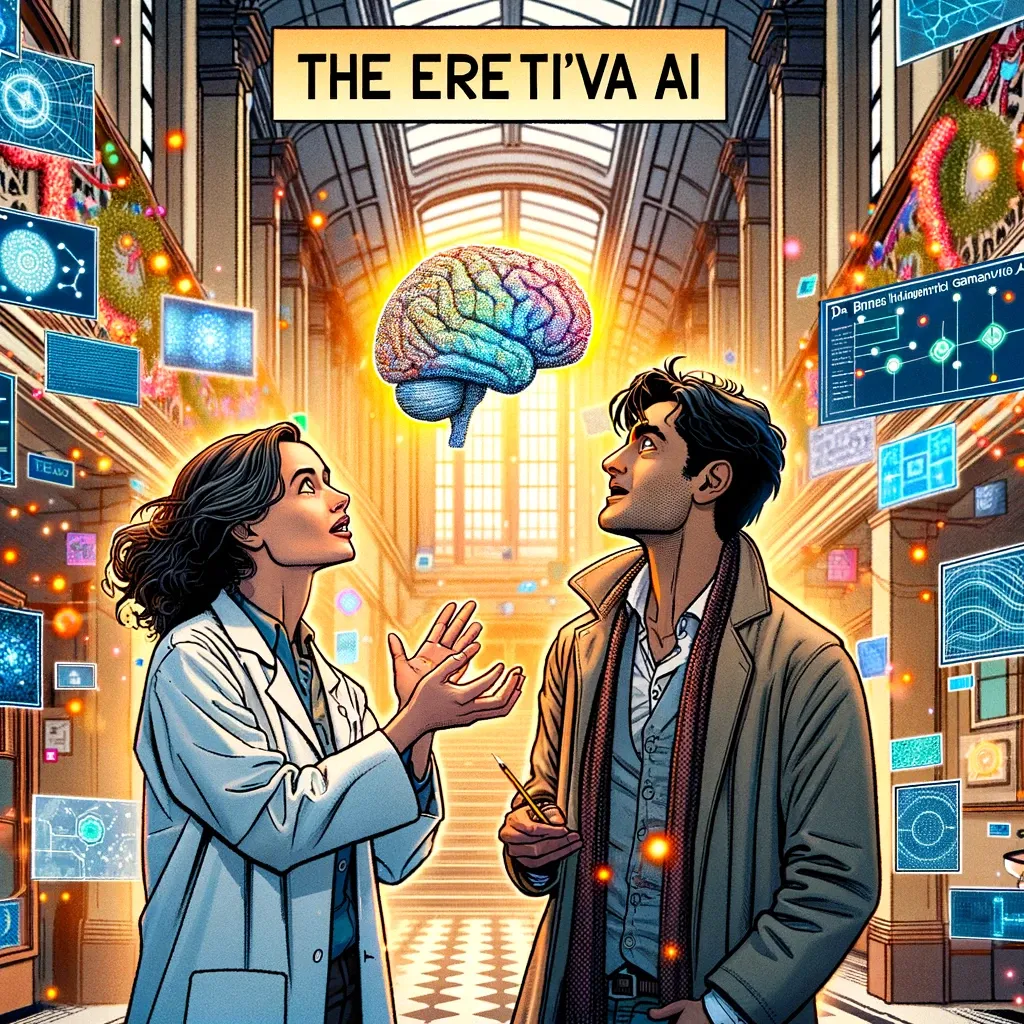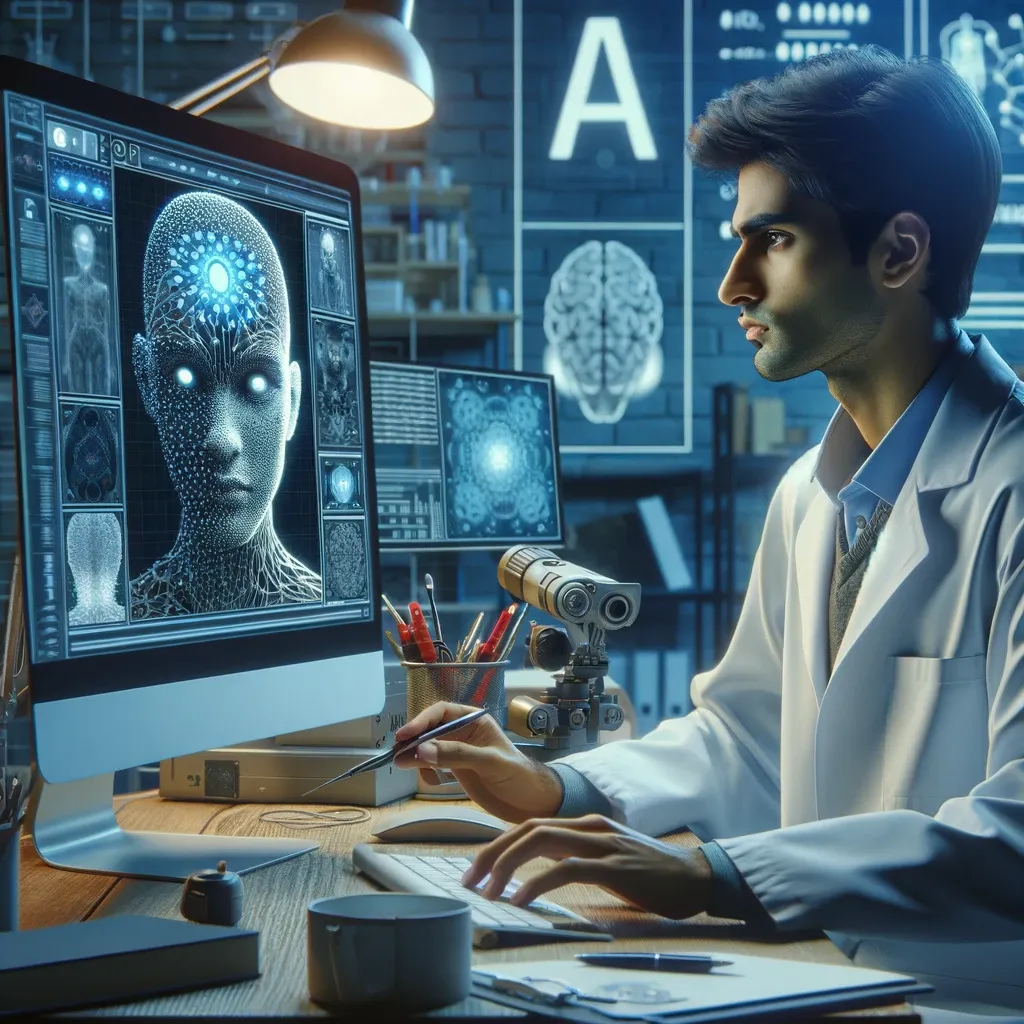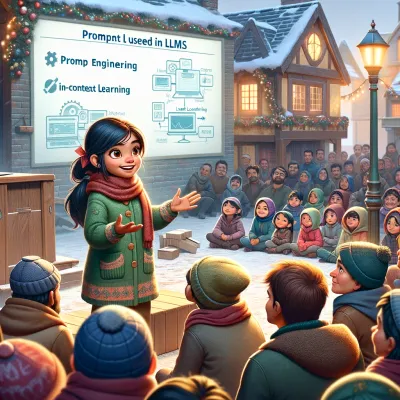Day 18 - Applications for GenAI

The Expanding Conversation
In the warmly lit university hallway, adorned with festive garlands and the soft glow of Christmas lights, Dr. Ingrid, Rohit, and now Dr. Silverman stood in an animated triangle of conversation. Dr. Ingrid, with her characteristic mix of humor and sharp intellect, steered the discussion towards the practical applications of Generative AI.
"So, Rohit, enlighten us with some novel applications of this Gen-AI," Dr. Ingrid playfully challenged, her eyes twinkling with curiosity.
As they lingered in the university hallway, Dr. Ingrid, always keen on tangible examples, prompted Rohit to elaborate on the practical applications of Generative AI. Rohit, filled with enthusiasm, began to outline various scenarios where this technology is making waves.
Rohit, eager to share his knowledge, began, "Well, one exciting application is in art and creativity. Generative AI can create stunning artworks, compose music, or even write poetry, opening doors to a new era of digital creativity."
Dr. Ingrid, always quick with a quip, added, "So, it's not just scientists but also artists who should be on the lookout!"

"Absolutely," Rohit said. "In the case of art and creativity, companies like OpenAI have developed tools like DALL-E, which generates images from textual descriptions using deep learning. It's as if you tell it to create a picture of a 'cat astronaut on the moon', and it will generate a never-before-seen image matching that description."
Dr. Ingrid chuckled, "I’d love to see that cat astronaut! But what about music?"
"There are AI Jukeboxes, which can compose music in various genres," Rohit continued. "It’s not just replicating existing songs but creating entirely new compositions. It's like having a virtual composer who never runs out of ideas. Companies like Google, OpenAI and many others have such applications"
Healthcare
"But that's just the tip of the iceberg," Rohit continued. "In the field of healthcare, Generative AI can assist in drug discovery, predicting molecular structures, and even personalizing medical treatments. It's like having a super-intelligent assistant in the lab."
"In drug discovery, companies like Atomwise use AI to predict molecular structures and their interactions. This speeds up the process of finding new medications and understanding diseases at a molecular level."
Dr. Silverman, who had been listening intently, chimed in, "And let's not forget its potential in scientific research. Generative AI can simulate complex scientific processes, analyze vast datasets, and even predict environmental changes."
Rohit nodded in agreement, "Exactly, and in the realm of education, imagine AI tutors that can adapt to each student’s learning style. It could revolutionize how we educate."
"Also, for instance, in environmental science, there’s GraphCast, an AI model by Deepmind for faster and more accurate global weather forecasting, utilizing AI to predict weather patterns and assess climate risks. It's like having a crystal ball that helps us prepare for and mitigate the effects of climate change."
Rohit then delved into the underlying technologies. "Many of these applications are powered by deep learning models like GANs (Generative Adversarial Networks), Diffusion and Variational Autoencoders but are not limited to this. GANs, for example, involve two neural networks contesting with each other to generate new, synthetic instances of data that can pass for real data."

Dr. Ingrid, ever the quick learner, interjected, "So it's like a game of digital cat and mouse, where one creates and the other judges?"
"Exactly," Rohit affirmed. "And these technologies are not just confined to big corporations. Tools like TensorFlow and PyTorch are making AI more accessible, allowing researchers and startups to innovate and create custom applications."
Dr. Ingrid leaned forward, her eyes alight with ideas. "And what about linguistics? Could it, perhaps, help in preserving endangered languages?"
"Absolutely," Rohit responded enthusiastically. "By learning the patterns and structures of languages, Generative AI could aid in language preservation and revival."
As they walked towards the lab, the conversation blossomed into a discussion of even more possibilities - from environmental protection to space exploration. Dr. Ingrid mused aloud, "Imagine if we could use it to predict patterns in ancient languages or explore distant galaxies!"
The festive air around them seemed to spark even more creativity in their ideas. Dr. Silverman, with a thoughtful look, added, "This Christmas, it seems we're not just celebrating a holiday but also the dawn of a new era in technology."

As they reached the lab, the trio felt a surge of excitement. The possibilities of Generative AI seemed as vast and twinkling as the Christmas lights adorning the university.
Dr. Ingrid, with a playful glint in her eye, concluded, "Well then, let's explore this magical world of Gen-AI. Who knows what wonders we'll discover next!"
Enjoyed unraveling the mysteries of AI with Everyday Stories? Share this gem with friends and family who'd love a jargon-free journey into the world of artificial intelligence!
No spam, no sharing to third party. Only you and me.






